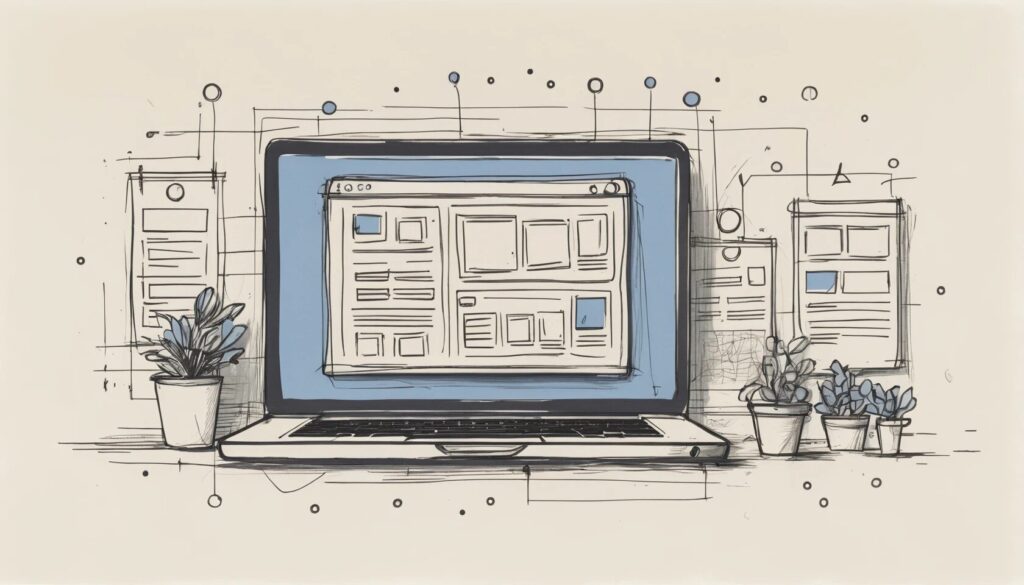Wireframing with Figma: The Secret Weapon for UI/UX Designers
Imagine constructing a skyscraper without blueprints. Sounds like a disaster waiting to happen, right? Well, designing a digital product without wireframes is just as reckless. Wireframing is the unsung hero of UI/UX design, ensuring structure, flow, and clarity before pixels and colors enter the conversation.
And when it comes to wireframing tools, Figma is the undisputed champion. It combines real-time collaboration, flexibility, and powerful design features, making the tedious process of wireframing feel (almost) effortless. But if you’re still struggling with chaotic drafts or outdated processes, it’s time to level up. Let’s dive into how Figma design techniques can transform your approach to wireframing.
Why Wireframing is the Backbone of UI/UX Design
- Wireframes establish a clear visual hierarchy and structure.
- They facilitate smooth communication between teams.
- Early-stage wireframes prevent unnecessary revisions.
- They help designers focus on user experience before aesthetics.
Wireframing is like drawing a treasure map before you go on an expedition. Without it, you’re just wandering in circles. A well-crafted wireframe ensures that the core functionality and navigation are in place before anyone gets distracted by fancy gradients and trendy fonts.
Figma’s wireframing tools allow teams to collaborate in real time, eliminating the nightmare of managing multiple file versions. With instant feedback loops, designers can iterate quickly, ensuring a more streamlined and efficient design process.
Low-Fidelity vs. High-Fidelity Wireframes: Knowing When to Use Each
- Low-fidelity wireframes focus on layout and structure without distracting details.
- Mid-fidelity wireframes add a bit more clarity with labels and placeholders.
- High-fidelity wireframes resemble the final design and include branding elements.
Not all wireframes are created equal. Some are quick and dirty sketches, while others are polished masterpieces. The choice between low-fidelity and high-fidelity wireframes depends on the project’s stage and requirements.
Low-fidelity wireframes are the rough drafts of the design world. They strip away distractions, allowing designers to focus solely on structure and functionality. Think of them as the napkin sketches of UI/UX wireframes—messy but essential for brainstorming.
Mid-fidelity wireframes refine this structure by adding labels, sections, and placeholders. They create a clearer picture of the layout while still leaving room for iteration.
High-fidelity wireframes are where things get serious. These designs mirror the final product, incorporating typography, colors, and interactivity. With Figma’s prototyping features, designers can even mimic real user interactions, making these wireframes powerful tools for testing and stakeholder buy-in.
Figma Pro Tips for Flawless Wireframes
- Start with a clear objective—don’t design without direction.
- Use Figma’s wireframe kits to speed up your workflow.
- Keep it simple—complexity should come later.
- Prioritize usability over aesthetics in early stages.
- Take advantage of Figma’s auto-layout for responsive designs.
Before you even touch Figma, define your wireframe’s purpose. Are you mapping out a mobile app? A landing page? A dashingly complex SaaS interface? Knowing your goal ensures that every line and box serves a function.
Figma offers built-in wireframe kits that can save you hours of unnecessary work. Instead of reinventing the wheel, leverage these pre-built templates to focus on refining user experience. And if you’re not using Figma’s auto-layout feature yet, you’re missing out on one of its most powerful tools for ensuring responsiveness.
Common Wireframing Mistakes and How to Avoid Them
- Adding too much detail too early.
- Ignoring accessibility considerations.
- Skipping user feedback and testing.
- Making wireframes too rigid.
One of the biggest wireframing sins? Overcomplicating things too soon. Wireframes are blueprints, not finished products. Keep them simple, and focus on functionality first.
Another often-overlooked factor? Accessibility. Your wireframe should consider users of all abilities, ensuring logical navigation and readable text sizes.
And please, don’t treat your wireframe like a sacred masterpiece. Wireframes exist to be tested, tweaked, and sometimes completely scrapped. Figma’s real-time collaboration features make gathering feedback easy, so use them.
When to Skip Low-Fidelity Wireframes and Go Straight to High-Fidelity
- When working with an established design system.
- If the project requires a quick turnaround.
- When stakeholders need a more visual representation.
Not every project needs a rough, scribbled wireframe. If your team already has a well-defined design system, jumping straight into high-fidelity wireframes can save time. This is particularly true for iterative projects where the visual framework is already established.
How Figma’s Wireframing Tools Stand Out
- Real-time collaboration eliminates version control chaos.
- Built-in prototyping bridges the gap between wireframes and interactive mockups.
- Figma’s community provides free wireframe templates and UI kits.
Figma isn’t just another wireframing tool—it’s a revolution. Unlike traditional design software, it allows multiple users to work on the same file simultaneously. No more “final-v3-revised-FINAL-final” file names cluttering your desktop.
And let’s not forget Figma’s prototyping features. Designers can transform static wireframes into interactive experiences, eliminating the need for third-party tools. Plus, Figma’s vibrant community offers an endless supply of free templates and UI kits, making wireframing even easier.
Final Thoughts: Stop Overcomplicating Wireframing—Use Figma
Wireframing isn’t just a step in the design process—it’s the foundation of a successful UI/UX project. Skipping it is like trying to bake a cake without a recipe: sure, you might end up with something edible, but it’s probably going to be a mess.
With its intuitive interface, real-time collaboration, and powerful prototyping features, Figma makes wireframing a breeze. Whether you’re sketching out low-fidelity wireframes or refining high-fidelity designs, it’s the tool that keeps your creative process smooth and efficient.
So stop making design harder than it needs to be. Embrace Figma, streamline your wireframing process, and watch your UI/UX projects flourish.
